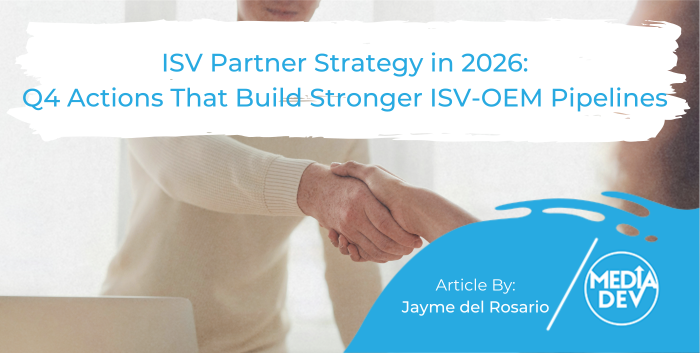Now more than ever, software vendors continue to see the benefits of content marketing for growing their business. Here’s how you can optimize it to boost your brand visibility and generate leads.
I don’t think there’s any doubt in anyone’s mind that content is a must for every kind of business. Having valuable content helps prospects better understand your offer, highlights the benefits you can bring to improve their daily lives, and should help attract sales inquiries. As everyone knows, the customer journey has radically changed over the past 20 years — people now have such easy access to (so much) information that there’s no excuse not to be out there educating and nurturing your core target audience.
But content marketing does not come without challenges. How can I make my content relevant? How can I successfully promote my content across channels? How can I write content to include the keywords I want to rank for? How can I make my content exciting to better engage my target audience? How can I calculate the ROI of my content?
In order to get the most out of your content, you first need to start by learning how to create valuable content. Here are some ideas to get you started:
Put yourself in your prospect’s shoes
Understanding your target audience is key. Creating buyer personas will help you put yourself in your prospect’s shoes to better grasp what makes him or her tick. What motivates your prospects? What interests them? What challenges do they face in the day to day? How would your solution make their jobs easier? It is important to write content with your audience in mind and some types of content lend themselves well to this exercise; in our experience, case studies and infographics are the preferred assets of choice by functional business decision-makers because they are easy to read and not too technical. Of course, if your buyers are mostly technical decision-makers, you shouldn’t be afraid to speak their lingo either, but the challenge for marketers is to steer clear of what I call “marketing mumbo-jumbo”; those nice marketing-crafted sentences that often leave readers thinking, “What is this product?” If your audience doesn’t understand what you are selling, they are going to tune out (technical or not), so it is absolutely fundamental that you can explain your offer in layman’s terms simple, to the point, and easily understood by anyone. Knowing your audience well will help you determine what language to use to describe your product, and how to best get your message across to them.
Pay attention to details
As Bernadette Wilson from the DevPro Journal said in a one-on-one interview with me, ISVs tend to get lazy when it comes to writing; they believe it’s not important to pay attention to grammar or the fundamental rules of style. While you don’t have to have a degree in English literature to be a good writer, many ISVs completely neglect the basics, which is a mistake; having a good content writer/editor can make the difference between creating engaging content, and losing your audience’s attention.
Compelling storytelling
Everyone loves a good story. Anecdotes are memorable, and they can teach you important life lessons. Storytelling is the art of sharing stories, but more importantly, it’s an effective method of getting across ideas. In B2B marketing, making sure that your content tells a story will help make your brand sticky. This can be done through a combination of different types of content including videos, on-demand webinars, customer success stories, or employee testimonials.
Once you have developed engaging content, here’s how you can get the most out of it:
Promote your content where your buyers are
Creating visibility for your content means taking a proactive approach to promoting it. This can be done by combining tactics both on and offline so that you can be sure your content is getting to the right hands (and in front of the right eyes). Just posting content online and hoping people will see it is a mistake — you need to monitor the performance of your content (how it ranks for keywords, how you can optimize it for SEO …) to see what resonates best with whom. Using outbound telemarketing and social selling can really help; these one-on-one, peer-to-peer approaches to obtain opt-ins can be very effective to identify the right prospects and nurture them into sales opportunities down the road.
Use your content in more ways than one
One piece of good content can go a long way. Not only can you create email marketing campaigns around good content, but gated content can also get you social media followers, and encourage prospects to give you their consent to opt-in to receive more information from you in the future. You can also find ways to use content to collaborate with new partners, especially if you don’t have the time or resources to create original content yourself.
Recognize content for what it is
A company can always have more content, but more does not always mean better. By recognizing content for what it is (a tool to gain visibility for your brand), you will come to see the public relations function it serves. While the goal of content is to engage your audience in the hopes that they will buy your product or service, it doesn’t always turn out like this. Usually, there is no immediate link between one piece of content and a sale; content should, however, be used to help establish brand authority and trust over time.








